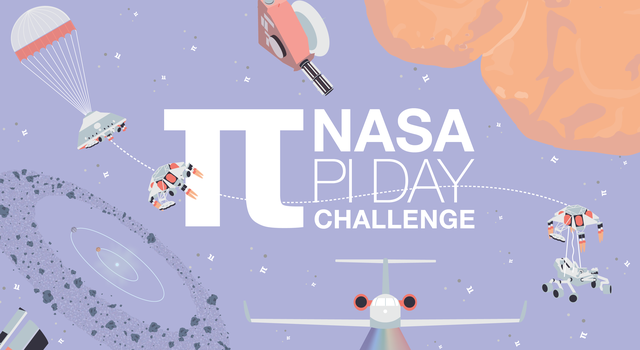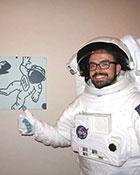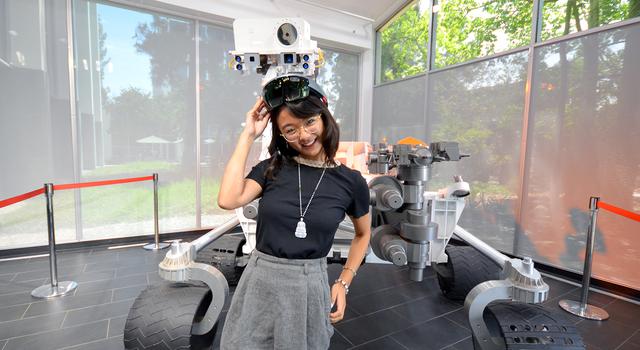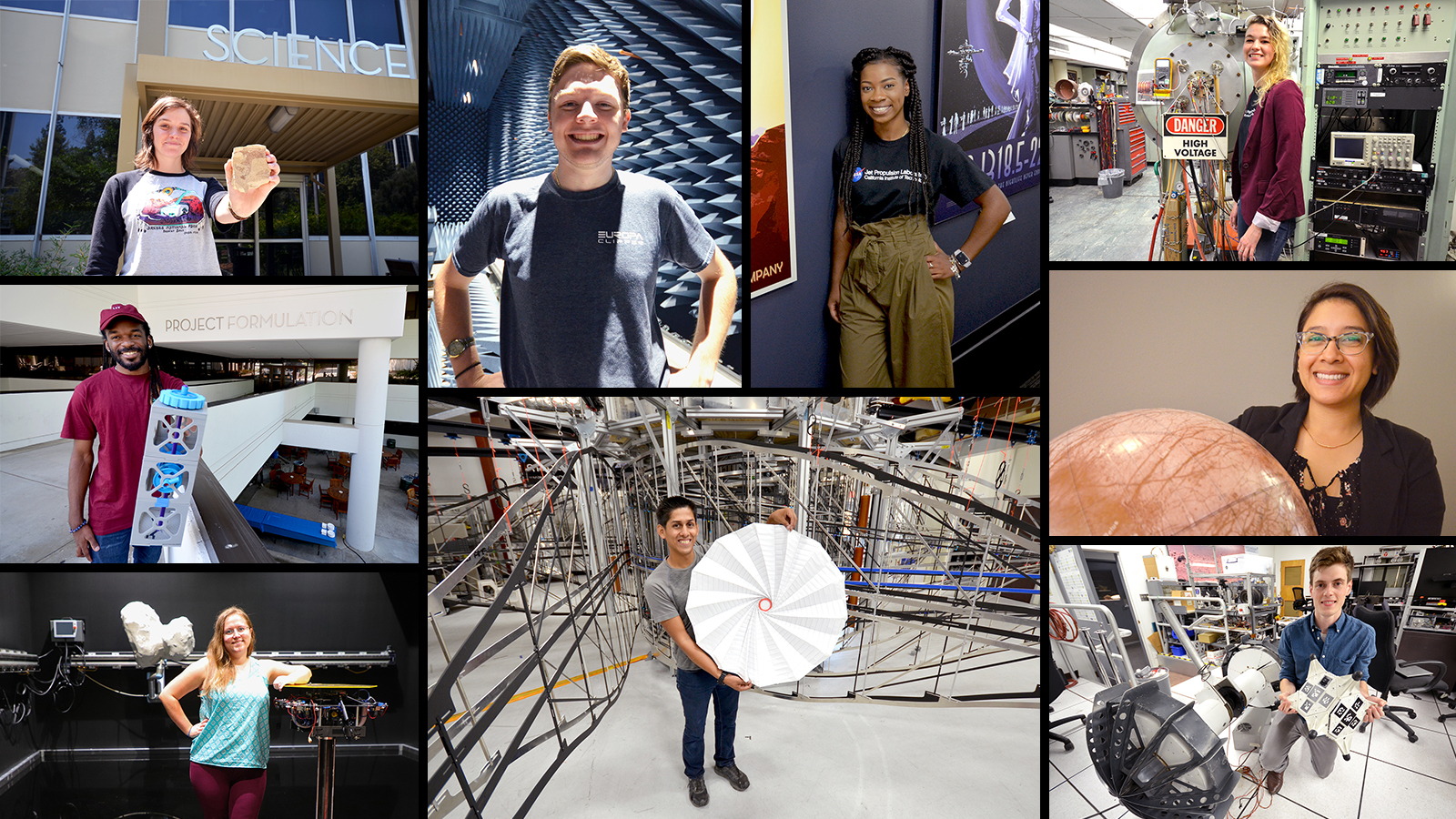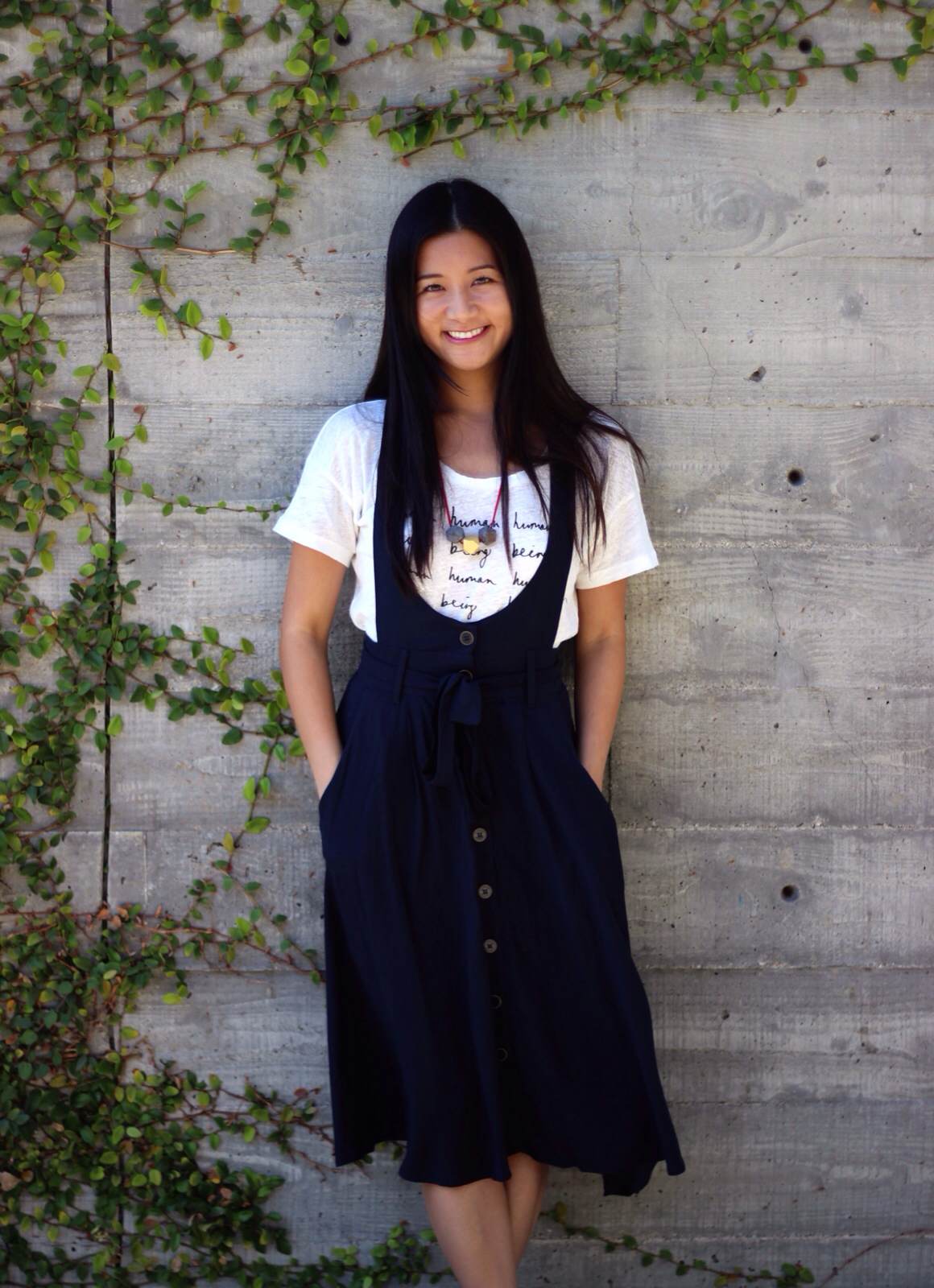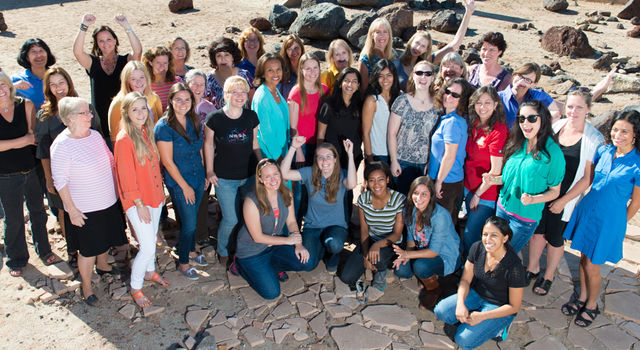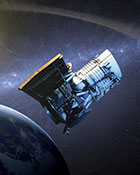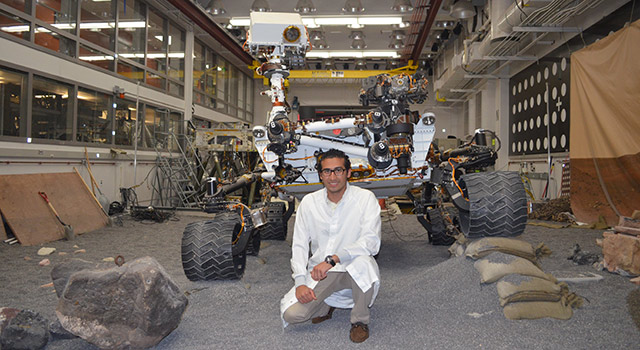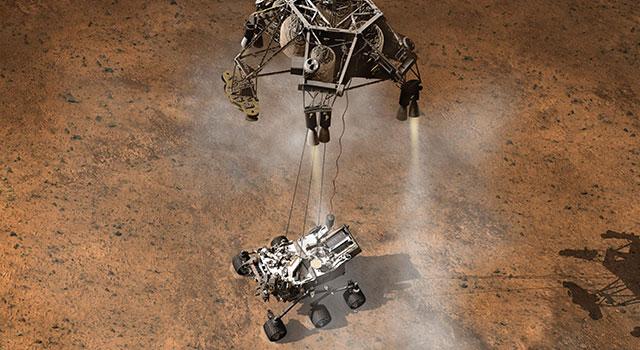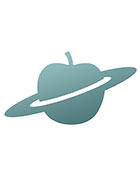Teachable Moments | March 6, 2020
We've Got the Formula for a Stellar Pi Day
Update: March 16, 2020 – The answers to the 2020 NASA Pi Day Challenge are here! View the illustrated answer key (also available as a text-only doc).
In the News
Our annual opportunity to indulge in a shared love of space exploration, mathematics and sweet treats has come around again! Pi Day is the March 14 holiday that celebrates the mathematical constant pi – the number that results from dividing any circle's circumference by its diameter.

Visit the Pi in the Sky 7 lesson page to explore classroom resources and downloads for the 2019 NASA Pi Day Challenge. Image credit: NASA/JPL-Caltech | + Expand image
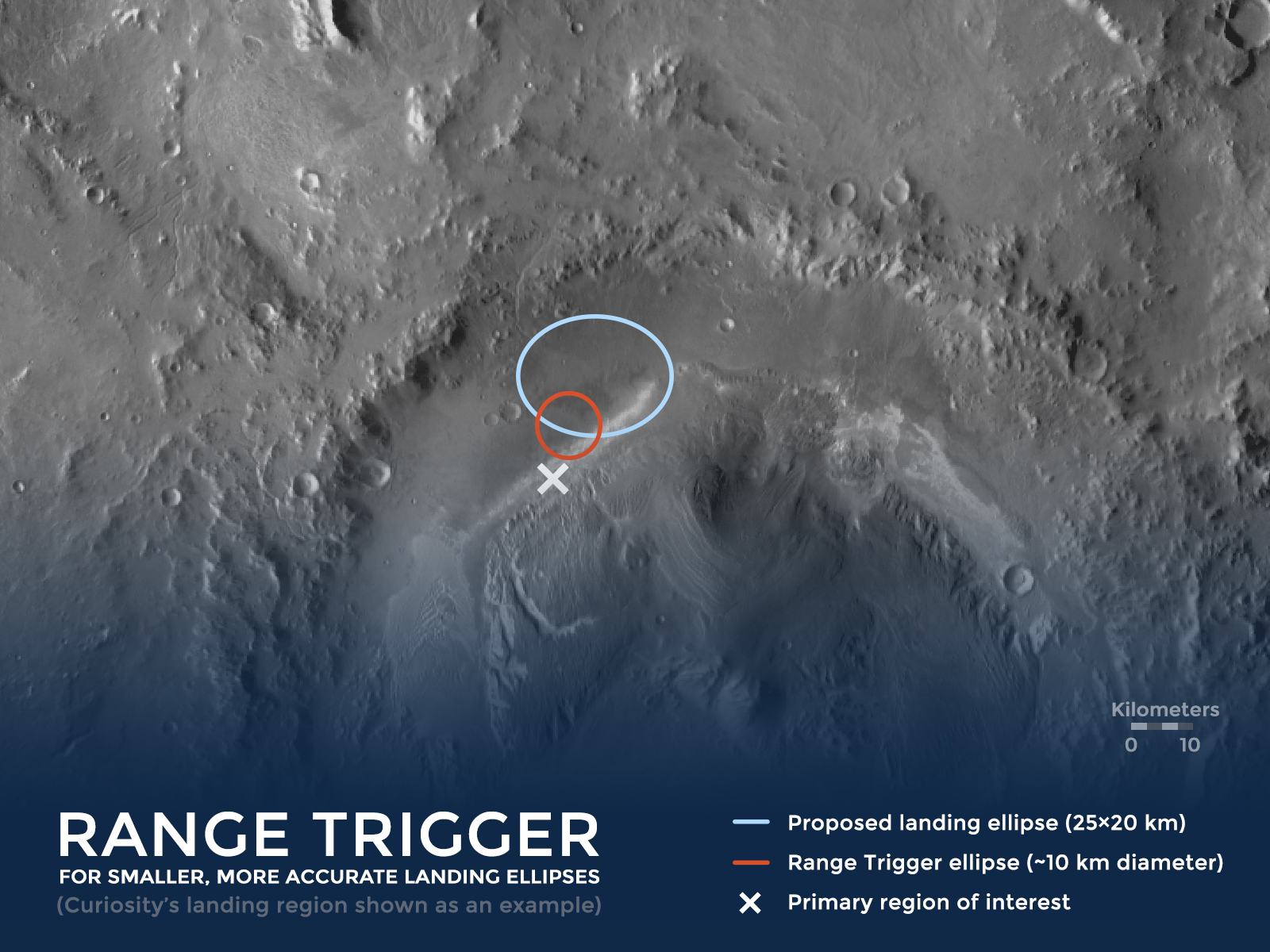
A new Mars landing technique called Range Trigger is reducing the size of the ellipse where spacecraft touch down. Image credit: NASA/JPL-Caltech | › Full image and caption
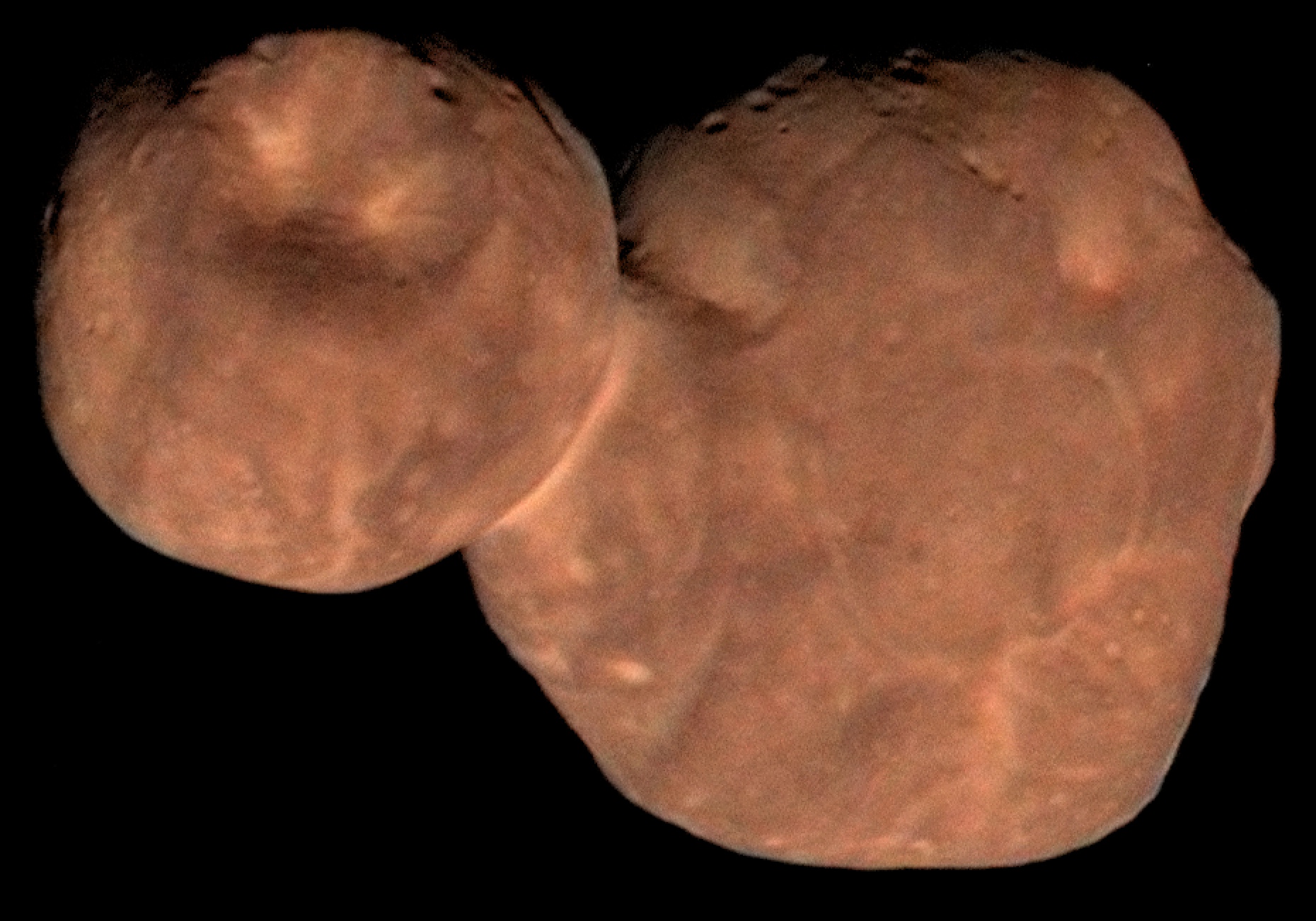
Composite image of the Kuiper Belt object Arrokoth from NASA's New Horizons spacecraft. Image credit: NASA/Johns Hopkins University Applied Physics Laboratory/Southwest Research Institute/Roman Tkachenko | › Full image and caption
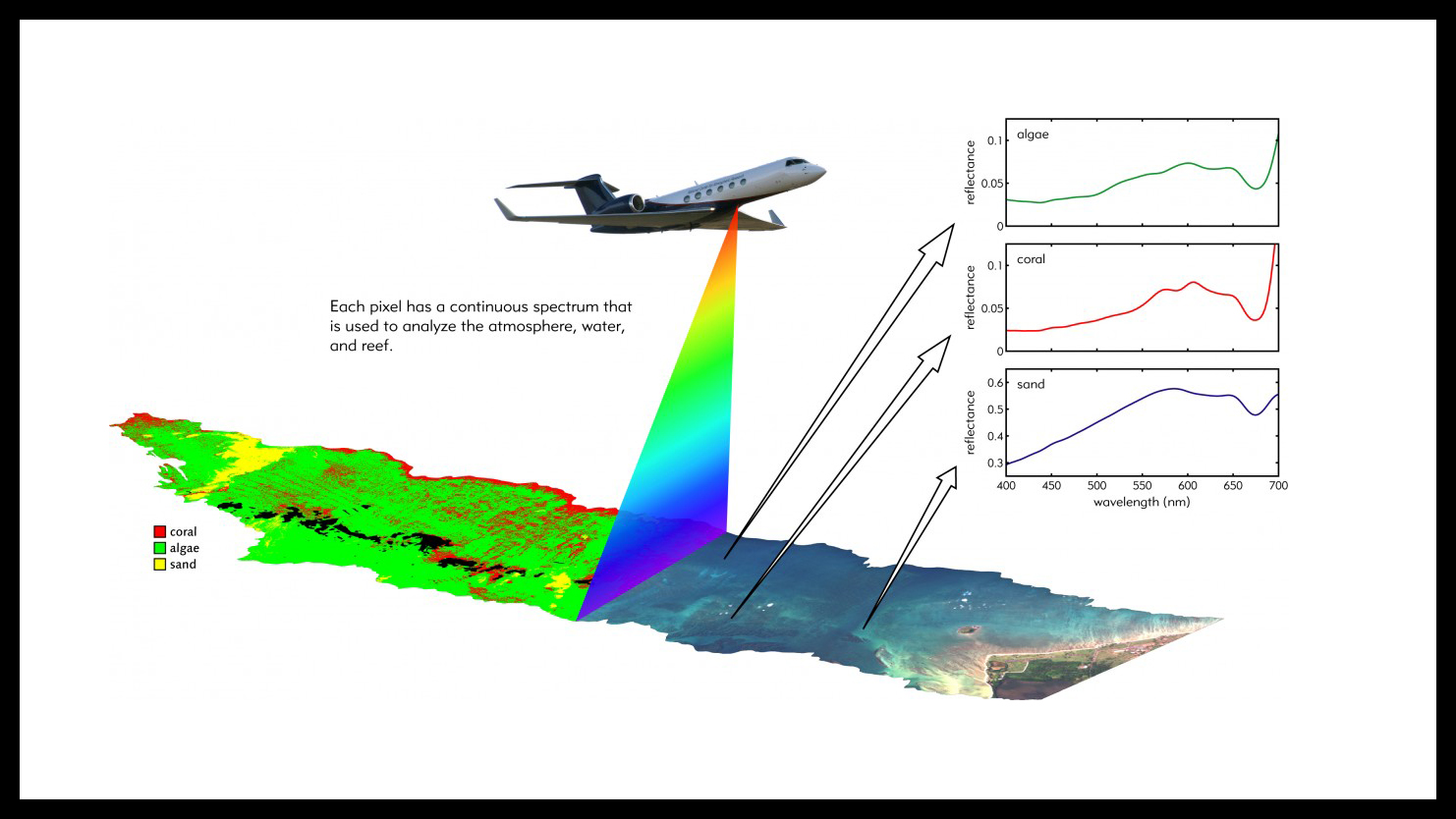
The CORAL mission records the spectra of light reflected from the ocean to study the composition and health of Earth's coral reefs. Image credit: NASA | + Expand image
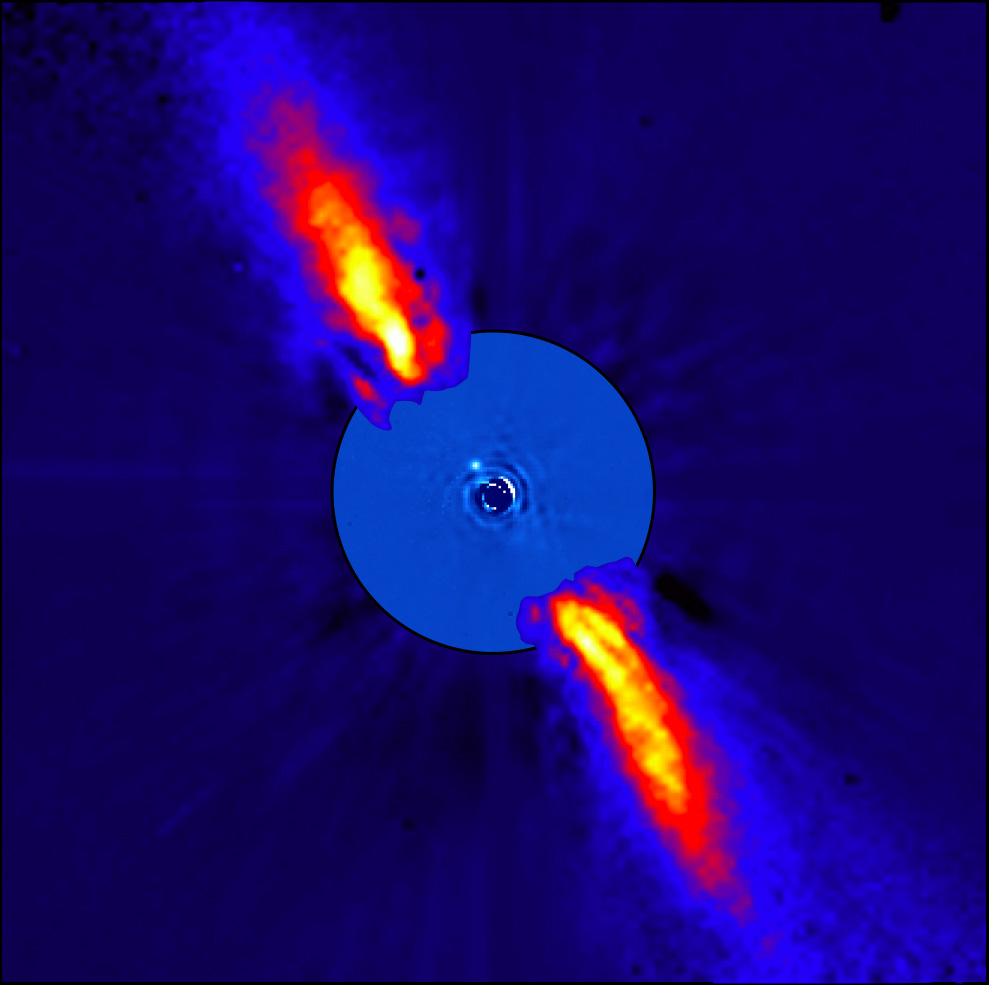
The star Beta Pictoris and its surrounding debris disk in near-infrared light. Image credit: ESO/A.-M. Lagrange et al. | › Full image and caption
Besides providing an excuse to eat all varieties of pie, Pi Day gives us a chance to appreciate some of the ways NASA uses pi to explore the solar system and beyond. You can do the math for yourself – or get students doing it – by taking part in the NASA Pi Day Challenge. Find out below how to test your pi skills with real-world problems faced by NASA space explorers, plus get lessons and resources for educators.
How It Works
The ratio of any circle's circumference to its diameter is equal to pi, which is often rounded to 3.14. But pi is what is known as an irrational number, so its decimal representation never ends, and it never repeats. Though it has been calculated to trillions of digits, we use far fewer at NASA.
Pi is useful for all sorts of things, like calculating the circumference and area of circular objects and the volume of cylinders. That's helpful information for everyone from farmers irrigating crops to tire manufacturers to soup-makers filling their cans. At NASA, we use pi to calculate the densities of planets, point space telescopes at distant stars and galaxies, steer rovers on the Red Planet, put spacecraft into orbit and so much more! With so many practical applications, it's no wonder so many people love pi!
In the U.S., 3.14 is also how we refer to March 14, which is why we celebrate the mathematical marvel that is pi on that date each year. In 2009, the U.S. House of Representatives passed a resolution officially designating March 14 as Pi Day and encouraging teachers and students to celebrate the day with activities that teach students about pi.
The NASA Pi Day Challenge
This year's NASA Pi Day Challenge poses four puzzlers that require pi to compare the sizes of Mars landing areas, calculate the length of a year for one of the most distant objects in the solar system, measure the depth of the ocean from an airplane, and determine the diameter of a distant debris disk. Learn more about the science and engineering behind the problems below or click the link to jump right into the challenge.
› Take the NASA Pi Day Challenge
› Educators, get the lesson here!
Mars Maneuver
Long before a Mars rover touches down on the Red Planet, scientists and engineers must determine where to land. Rather than choosing a specific landing spot, NASA selects an area known as a landing ellipse. A Mars rover could land anywhere within this ellipse. Choosing where the landing ellipse is located requires compromising between getting as close as possible to interesting science targets and avoiding hazards like steep slopes and large boulders, which could quickly bring a mission to its end. In the Mars Maneuver problem, students use pi to see how new technologies have reduced the size of landing ellipses from one Mars rover mission to the next.
Cold Case
In January 2019, NASA's New Horizons spacecraft sped past Arrokoth, a frigid, primitive object that orbits within the Kuiper Belt, a doughnut-shaped ring of icy bodies beyond the orbit of Neptune. Arrokoth is the most distant Kuiper Belt object to be visited by a spacecraft and only the second object in the region to have been explored up close. To get New Horizons to Arrokoth, mission navigators needed to know the orbital properties of the object, such as its speed, distance from the Sun, and the tilt and shape of its orbit. This information is also important for scientists studying the object. In the Cold Case problem, students can use pi to determine how long it takes the distant object to make one trip around the Sun.
Coral Calculus
Coral reefs provide food and shelter to many ocean species and protect coastal communities against extreme weather events. Ocean warming, invasive species, pollutants, and acidification caused by climate change can harm the tiny living coral organisms responsible for building coral reefs. To better understand the health of Earth's coral reefs, NASA's COral Reef Airborne Laboratory, or CORAL, mission maps them from the air using spectroscopy, studying how light interacts with the reefs. To make accurate maps, CORAL must be able to differentiate among coral, algae and sand on the ocean floor from an airplane. And to do that, it needs to calculate the depth of the ocean at every point it maps by measuring how much sunlight passes through the ocean and is reflected upward from the ocean floor. In Coral Calculus, students use pi to measure the water depth of an area mapped by the CORAL mission and help scientists better understand the status of Earth's coral reefs.
Planet Pinpointer
Our galaxy contains billions of stars, many of which are likely home to exoplanets – planets outside our solar system. So how do scientists decide where to look for these worlds? Using data gathered by NASA's Spitzer Space Telescope, researchers found that they're more likely to find giant exoplanets around young stars surrounded by debris disks, which are made up of material similar to what's found in the asteroid belt and Kuiper Belt in our solar system. Sure enough, after discovering a debris disk around the star Beta Pictoris, researchers later confirmed that it is home to at least two giant exoplanets. Learning more about Beta Pictoris' debris disk could give scientists insight into the formation of these giant worlds. In Planet Pinpointer, put yourself in the role of a NASA scientist to learn more about Beta Pictoris' debris disk, using pi to calculate the distance across it.
Participate
-
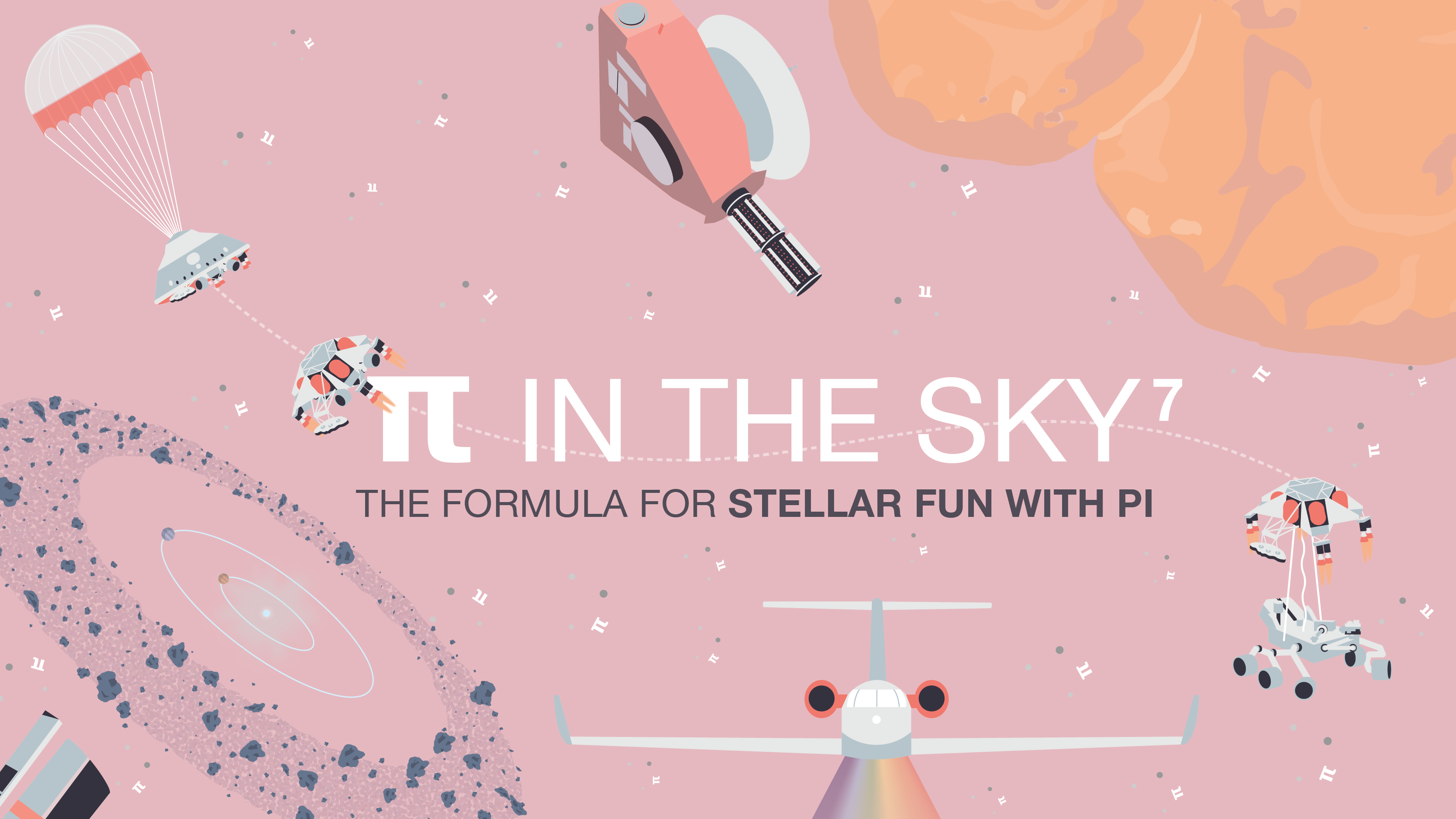
Pi Day Challenge Lessons
Here's everything you need to bring the NASA Pi Day Challenge into the classroom.
Grades 4-12
Time Varies
-
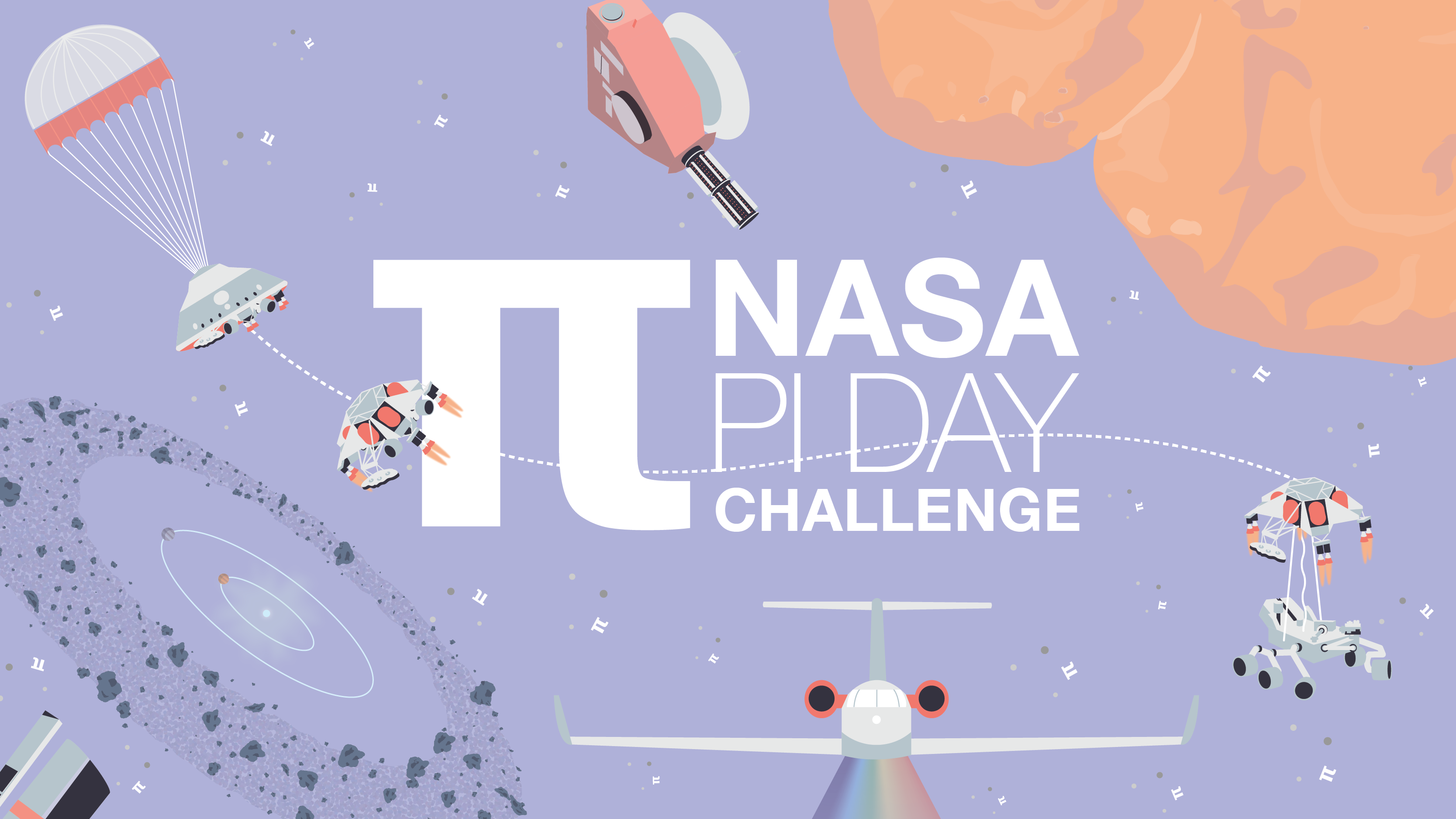
Slideshow: NASA Pi Day Challenge
The entire NASA Pi Day Challenge collection can be found in one, handy slideshow for students.
Grades 4-12
Time Varies
-
Pi Day: What’s Going ’Round
Tell us what you’re up to this Pi Day and share your stories and photos with NASA.
Join the conversation and share your Pi Day Challenge answers with @NASAJPL_Edu on social media using the hashtag #NASAPiDayChallenge
Blogs and Features
-

How Many Decimals of Pi Do We Really Need?
While you may have memorized more than 70,000 digits of pi, world record holders, a JPL engineer explains why you really only need a tiny fraction of that for most calculations.
-
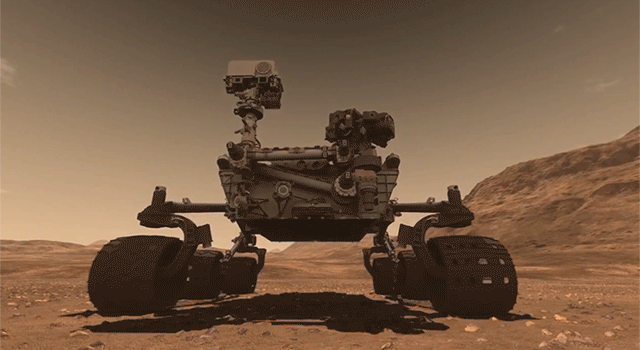
Slideshow: 18 Ways NASA Uses Pi
Whether it's sending spacecraft to other planets, driving rovers on Mars, finding out what planets are made of or how deep alien oceans are, pi takes us far at NASA. Find out how pi helps us explore space.
Related Lessons for Educators
-
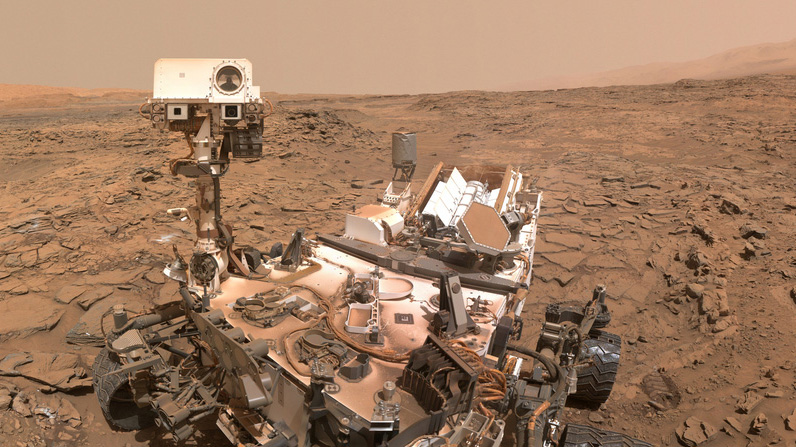
Rover Lessons
Explore a collection of standards-aligned STEM lessons all about rovers.
Grades K-12
Time Varies
-
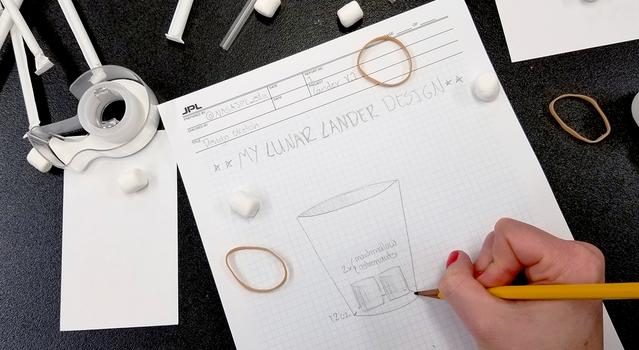
Touchdown
Students design and build a shock-absorbing system that will protect two "astronauts" when they land.
Grades 3-8
Time 30 mins - 1 hr
-
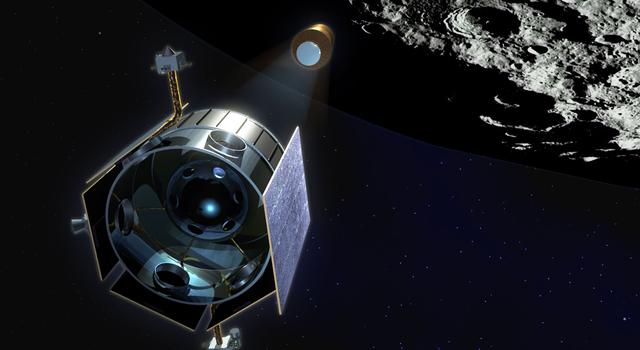
On Target
Students modify a paper cup so it can zip down a line and drop a marble onto a target.
Grades 6-12
Time 30 mins - 1 hr
-
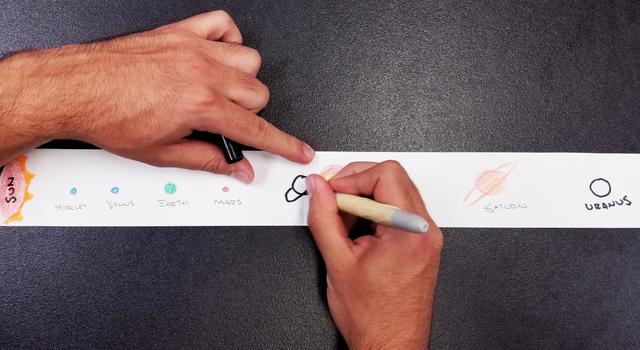
Solar System Scale Models
Explore a collection of standards-aligned STEM lessons all about the size and scale of our solar system.
Grades 1-12
Time Varies
-
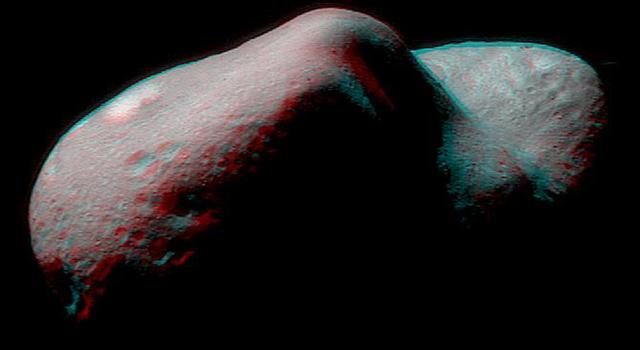
Modeling an Asteroid
Lead a discussion about asteroids and their physical properties, then have students mold their own asteroids out of clay.
Grades 3-5
Time 30 mins - 1 hr
-
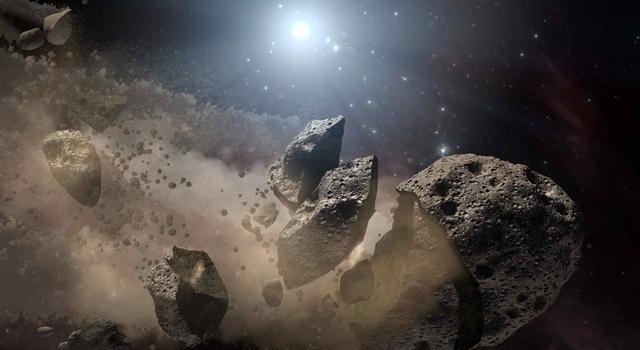
Math Rocks: A Lesson in Asteroid Dynamics
Students use math to investigate a real-life asteroid impact.
Grades 8-12
Time 30 mins - 1 hr
-

Asteroid Ace: A 'Pi in the Sky' Math Challenge
Students use pi to calculate the rotation rate of an asteroid from another solar system in this illustrated math problem.
Grades 11-12
Time < 30 mins
-
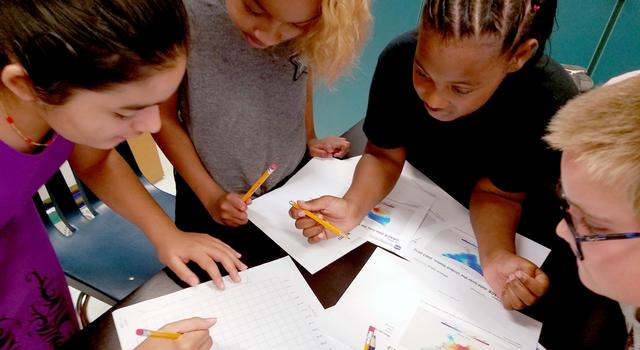
Climate Change Lessons
Explore a collection of standards-aligned STEM lessons all about Earth's changing climate.
Grades K-12
Time Varies
-
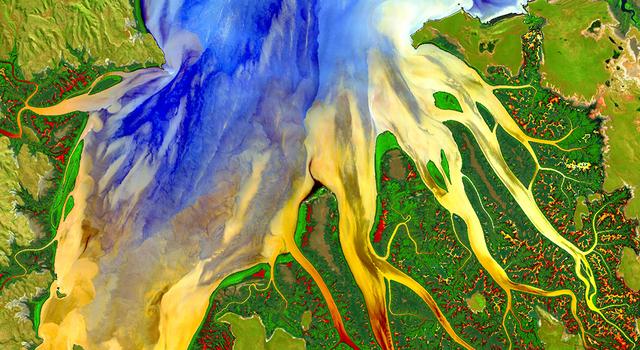
Using Light to Study Planets
Students build a spectrometer using basic materials as a model for how NASA uses spectroscopy to determine the nature of elements found on Earth and other planets.
Grades 6-11
Time < 2 hrs
-
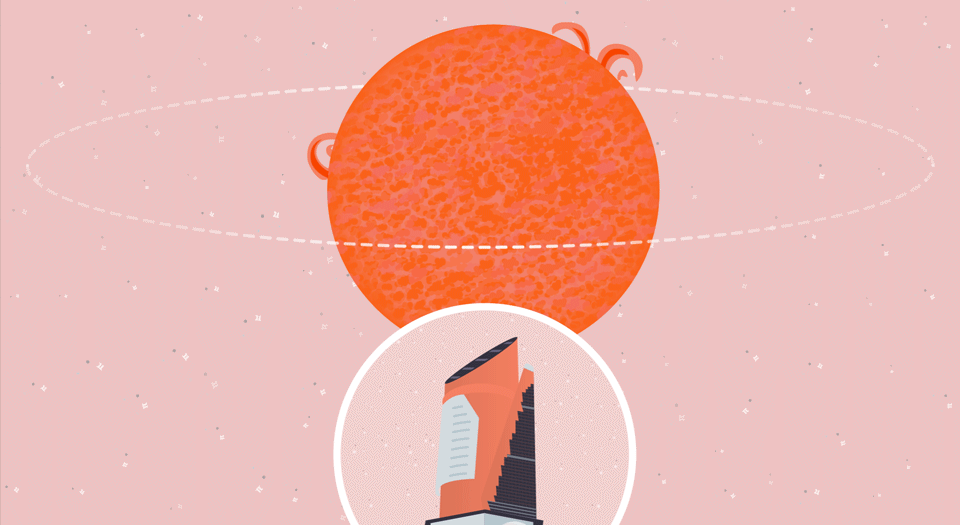
Solar Sleuth: A 'Pi in the Sky' Math Challenge
In this illustrated math problem, students use pi and data from the Kepler space telescope to find the size of a planet outside our solar system.
Grades 6-9
Time < 30 mins
-
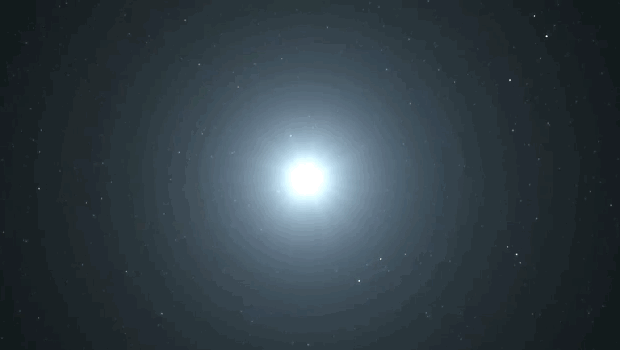
Exploring Exoplanets with Kepler
Students use math concepts related to transits to discover real-world data about Mercury, Venus and planets outside our solar system.
Grades 6-12
Time 30 mins - 1 hr
-
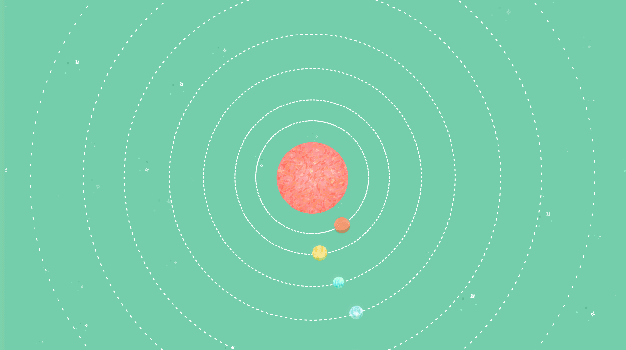
Habitable Hunt: A 'Pi in the Sky' Math Challenge
In this illustrated math problem, students use the mathematical constant pi to find the "habitable zone" around a distant star and determine which of its planets are in that zone.
Grades 11-12
Time < 30 mins
Related Activities for Students
-
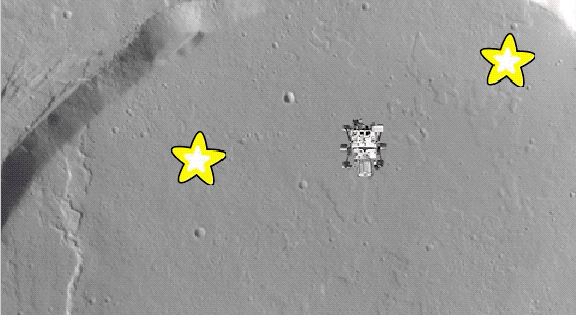
Make a Moon or Mars Rover Game
Create a Moon or Mars exploration game using Scratch, a visual programming language. Think like NASA space-mission planners to design your game!
Type Project
Subject Technology
-
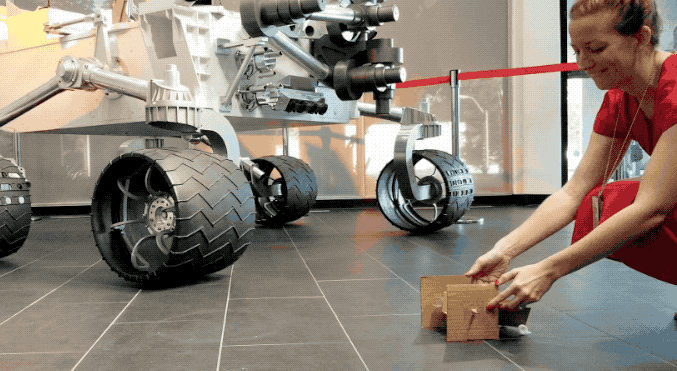
Make a Cardboard Rover
Build a rubber-band-powered rover that can scramble across a room.
Type Project
Subject Engineering
-
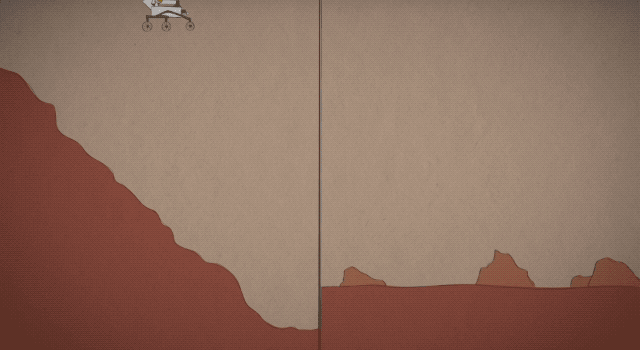
Mars in a Minute: How Do You Choose a Landing Site?
So, you want to study Mars with a lander or rover – but where exactly do you send it? Learn how scientists and engineers tackle the question of where to land on Mars in this 60-second video.
Type Video
Subject Engineering
-

Mars in a Minute: How Do You Land on Mars?
Getting a spacecraft to Mars is one thing. Getting it safely to the ground is a whole other challenge! This 60-second video from NASA's Jet Propulsion Laboratory explains three ways to land on the surface of the Red Planet.
Type Video
Subject Engineering
-
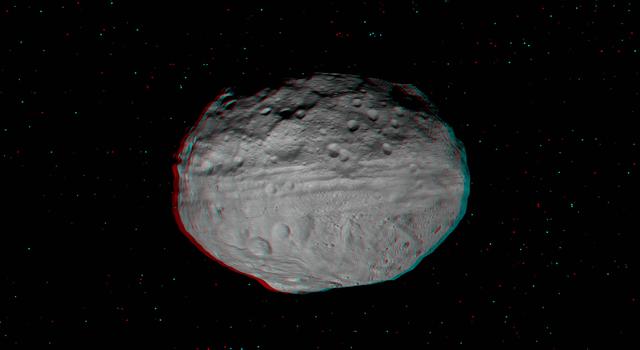
What's That Space Rock?
Find out how to tell the difference between asteroids, comets, meteors, meteorites and other bodies in our solar system.
Type Slideshow
Subject Science
-
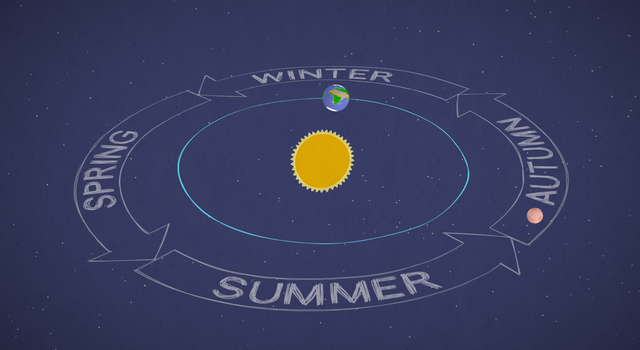
Mars in a Minute: How Long is a Year on Mars?
How long is does it take Mars to make one trip around the Sun and why is one Earth year shorter? Find out in one minute!
Type Video
Subject Science
-
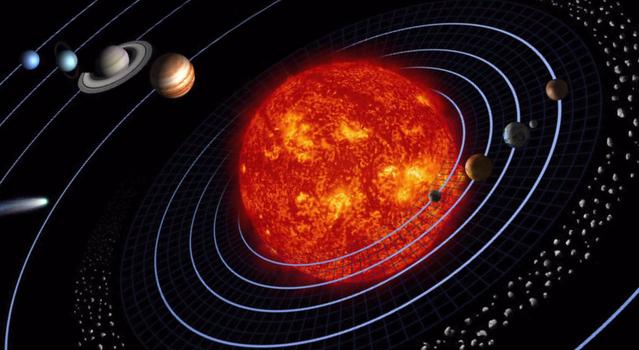
Space Place in a Snap: The Solar System's Formation
Find out how our solar system formed and how it came to be the busy place it is today.
Type Video
Subject Science
-
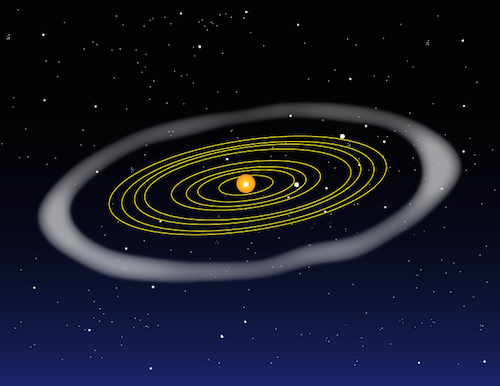
What Is the Kuiper Belt?
Learn about the Kuiper Belt and some of its famous members, Kuiper Belt Objects.
Type Article
Subject Science
-
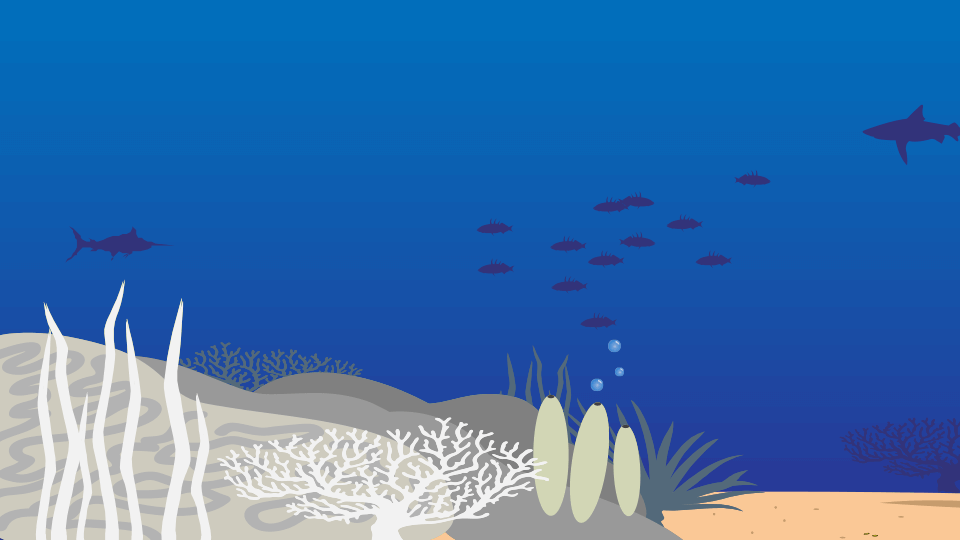
Coral Bleaching Simulator
Adjust water temperature and pollution levels in this simulator to see what happens to a coral reef depending on the conditions you choose!
Type Interactive
Subject Science
-
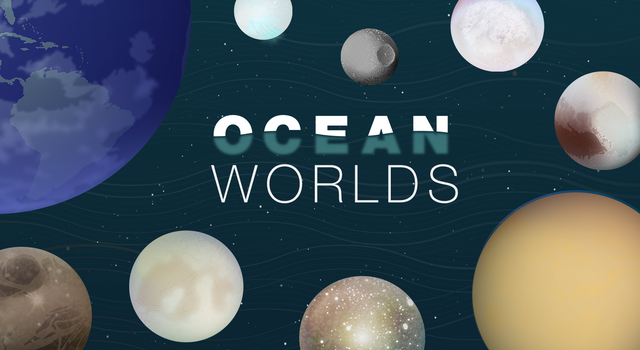
Ocean Worlds
Where might oceans – and living things – exist beyond Earth? Scientists have their eyes on these places in our own solar system.
Type Slideshow
Subject Science
-
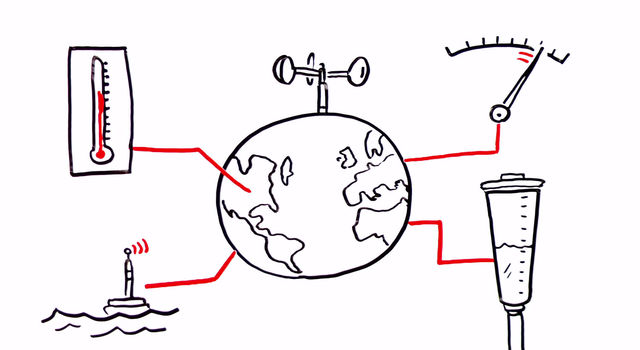
NASA's Earth Minute: Mission to Earth?
NASA doesn't just explore outer space! It studies Earth, too, with a fleet of spacecraft and scientists far and wide.
Type Video
Subject Science
-

NASA's Earth Minute: Earth Has a Fever
Why is Earth getting hotter and what does that mean for us?
Type Video
Subject Science
NOAA Video Series: Coral Comeback
- Article: Giant Exoplanet Hunters: Look for Debris Disks
- Video: The Evolution of a Planet-Forming Disk
- Video: Birth of "Phoenix" Planets?
Multimedia
-
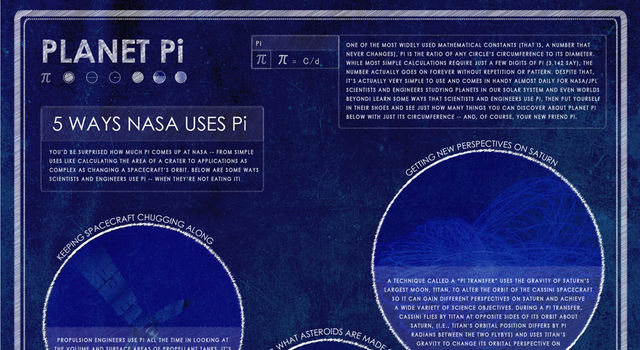
Infographic: Planet Pi
This poster shows some of the ways NASA scientists and engineers use the mathematical constant pi (3.14) and includes common pi formulas.
- Posters: Exoplanet Travel Bureau
Facts and Figures
Missions and Instruments
Websites
TAGS: K-12 Education, Math, Pi Day, Pi, NASA Pi Day Challenge, Events, Space, Educators, Teachers, Parents, Students, STEM, Lessons, Problem Set, Mars 2020, Perseverance, Curiosity, Mars rovers, Mars landing, MU69, Arrokoth, New Horizons, Earth science, Climate change, CORAL, NASA Expeditions, coral reefs, oceans, Spitzer, exoplanets, Beta Pictoris, stars, universe, space telescope, Climate TM
Edu News | October 22, 2019
NASA Essay Contest Winner: Naming Curiosity Mars Rover 'Changed My Life'
Students have just over one week more to enter NASA’s Name the Rover Essay Contest. While they put the finishing touches on their essays (due Nov. 1, 2019), meet the most recent naming contest winner, Clara Ma. Find out what Ma is up to more than 10 years after submitting her winning name for the Mars rover now known as Curiosity and why she says the experience changed her life.
› Read more on JPL News
› Find related resources for educators
Meet JPL Interns | December 18, 2018
From Struggling in School to ‘Killing It at NASA,’ a VR Dream Come True
Until she discovered game development, Michelle Vo’s daydreams were a problem. She couldn’t focus in her computer science classes. Her grades were dipping. She wondered whether she was cut out to be a programmer or for school at all. So she took a break to make something just for fun, a self-help game. And help her, it did. Now focusing on virtual and augmented reality, Vo is back at school, studying not just computer science, but also cognitive science, linguistics and digital humanities. It’s a lot, but to create a virtual world, she says one has to first understand how people navigate the real one. This summer, at NASA’s Jet Propulsion Laboratory, the UCLA student applied her talents to VR and AR experiences that help scientists explore a totally different world, Mars. While Vo’s tendency to daydream hasn’t gone away, she now knows how to use the distractions for good; she turns them into VR inspiration.
What are you working on at JPL?
I worked on this project called OnSight, which just won NASA Software of the Year! I also worked on another project for the InSight Mars lander mission. Honestly, it’s been such a dream come true to intern here. I actually used to struggle a lot with school because I would often get caught up in my own daydreams. However, I’m really glad I found a unique career path in VR where I can turn those dreams into something useful.
That's so great that you were able to channel your daydreams in that way. How did you go from struggling in school to doing VR?
When I first tried on a VR headset, I was like, "This is the future. I need to do whatever I can to learn about this." I decided to study computer science, but it was easy to get lost and fall behind in a large classroom environment. Not a lot of people know this, but I was on academic probation for a while. Looking back, I think my shyness held me back from asking for the help that I needed.
When I took a break from school, I decided I wanted to try making a game. I wanted to do something just for fun, and I was determined to fix my bad habits. So with some friends, I created a self-help game at AthenaHacks, a women’s hackathon. For 24 hours, I was just immersed in my work. I had never felt that way about anything in my life, where I was just zoned in, in my own world, building something I loved. And that's when I realized, I think it's game development. I think this is what I want.
So I spent the year teaching myself [game development], and I got a lot more comfortable using the Unity game engine. I went on to attend Make School’s VR Summer Academy in San Francisco. That smaller learning environment opened up the world for me. It boosted my confidence more than anything to have the support I needed. I was like, "Maybe my grades aren’t so great, but I know how to build VR applications – and the world needs VR right now.”
So when I went back to my university, I thought, "I'll try again. I'm going to go back to computer science.” And so far so good. I'm into my fourth year at UCLA studying cognitive science, linguistics, computer science and digital humanities. It sounds like a lot, but they're all related in the sense that they're all connected to VR. To me, VR is mainly a study of the mind and how we perceive reality. It’s not just about game development; you also need to understand human behavior to create good user-friendly VR.
So going back to your JPL internship, how are you using your VR skills to help scientists and engineers?

Michelle Vo poses for a photo with InSight Testbed Lead, Marleen Sundgaard. Image courtesy Michelle Vo | + Expand image
I’m interning in the Ops Lab, and the project I've been working on primarily is called OnSight. OnSight uses Microsoft’s HoloLens [mixed-reality software] to simulate walking on Mars. Mars scientists use it to collaborate with each other. We had “Meet on Mars” this morning, actually. On certain days, Mars scientists will put on their headsets and hang out virtually on Mars. They see each other. They talk. They look at Mars rocks and take notes. It's based on images from the Curiosity Mars rover. We converted those images to 3-D models to create the virtual terrain, so through VR, we can simulate walking on Mars without being there.
For a few weeks, I worked on another project with the InSight Mars lander mission. We took the terrain model that's generated from images of [the landing site] and made it so the team could see that terrain on top of their testbed [at JPL] with a HoloLens. For them, that's important because they're trying to recreate the terrain to … Wait, I recorded this.
[Michelle quickly scans through the photo library on her phone and pulls up a video she recorded from JPL’s In-Situ Instruments Laboratory. Pranay Mishra, a testbed engineer for the InSight mission, stands in a simulated Mars landscape next to a working model of the lander and explains:]
“When InSight reaches Mars, we're going to get images of the terrain that we land on. The instruments will be deployed to that terrain, so we will want to practice those deployments in the testbed. One of the biggest things that affects our deployment ability is the terrain. If the terrain is tilted or there are rocks in certain spots, that all has a strong effect on our deployment accuracy. To practice it here, we want the terrain in the testbed to match the terrain on Mars. The only things we can view from Mars are the images that we get back [from the lander]. We want to put those into the HoloLens so that we can start terraforming, or “marsforming,” the testbed terrain to match the terrain on Mars. That way, we can maybe get a rough idea of what the deployment would look like on Mars by practicing it on Earth.”

Michelle Vo stands in the InSight testbed at JPL with testbed engineers Drew Penrod (left) and Pranay Mishra (right). Image courtesy Michelle Vo | + Expand image
They already gave us photos of Mars, which they turned into a 3D model. I created an AR project, where you look through the HoloLens – looking at the real world – and the 3D model is superimposed on the testbed. So the [testbed team] will shovel through and shape the terrain to match what it’s like on Mars, at InSight’s landing site.
Did you know that this was an area that you could work in at JPL before interning here?
OnSight was a well known project in the VR/AR space, since it was the first project to use the Microsoft Hololens. I remember being excited to see a panel on the project at the VRLA conference. So when I finally got on board with the team, I was ecstatic. I also realized that there’s room for improvement, and that’s OK. That’s why I'm here as an intern; I can bring in a fresh look.One of the things I did on this project was incorporate physical controllers. My critique when I first started was, "This interface is a bit tricky to use," and if it's challenging for me to use as a millenial, how is this going to be usable for people of all ages? I try to think in terms of accessibility for everybody. Through lots of testing, I realized that people need to be touching things, physical things. That's what OnSight lacked, a physical controller. There were a lot of things that I experimented with, and eventually, it came down to a keyboard that allows you to manipulate the simulated Mars rovers. So now with OnSight, you can drive the [simulated] rovers around with a keyboard controller and possibly in the future, type notes within the application. Previously, you had to tap into the air to use an AR keyboard, and that's not intuitive. I believe we still need to touch the physical world.
How has this project compared with other ones that you've done elsewhere?
I felt really in my element. And for the first time ever, the imposter-syndrome voice went away. I felt like I could just be myself and actually have a voice to contribute. You know, I might be small, I might be the shortest one, but I'm mighty. It’s been such a positive and supportive environment. I've had an incredible internship and learned so much.
What has been the most unique experience that you've had at JPL?
Working in the Ops Lab has been such a unique experience. Every day, we’re tinkering with cutting-edge technology in AR and VR. I am so thankful to have my mentors, Victor Luo and Parker Abercrombie, who give me the support and guidance I need to grow and learn. Outside of the Ops Lab, I also had the unique opportunity to meet astronaut Kate Rubins and talk about VR with her. I had lunch with NASA Administrator Jim Bridenstine when he visited JPL. And working with the InSight mission and Marleen Sundgaard, the mission’s testbed lead, was especially cool. I can't believe I was able to use my skills for something the Mars InSight mission needed. Being able to say that is something I'm really proud of. And seeing how far I came, from knowing nothing to being here, makes me feel happy. If I can transform, anyone can do this too, if they choose to work hard, follow their own path and see it in themselves to take a risk.
What advice do you have for others looking to follow your path?
Listen to your gut. Your gut knows. It’s easy to feel discouraged when learning something new, but trust me, you’re not alone. You’ve always got to stay optimistic about finding a solution. I've always been someone who has experimented with a lot of things, and I think learning is something you should definitely experiment with. If the classroom setting is not for you, try teaching yourself, try a bootcamp, try asking a friend – just any alternative. There is nothing wrong with carving your own path when it comes to your education. Everyone’s at their own pace, just don’t give up!
My biggest inspiration is the future. I think about it on a daily basis. I know I have a very cheery, idealistic view on life, but I think, "What's wrong with that?" as long as you can bring it back to reality.
Speaking of that, what is your ultimate dream for your career and your future?
I was raised in the Bay Area, and I grew up in Santa Clara so the tech culture of Silicon Valley was inescapable. I love Silicon Valley, but there is still a huge homelessness issue. I’ve always thought, “We have the brightest engineers and scientists doing the most amazing, crazy things, yet we still can't alleviate homelessness.” Everybody deserves a place to sleep and shower. People need to have their basic needs met. I’d love to see some sort of VR wellness center that could help people train for a job, overcome fears and treat mental health.
That's my idealistic dream, but back to present-day dreams: I'm actually doing a 180. I'm leaving tech for a little bit, and I’m taking Fall quarter off. I'll start back at UCLA in January, but I'm taking a leave to explore being an artist. I'm writing a science-fiction play about Vietnamese-American culture. I was inspired by my experience here at JPL. I feel really optimistic about the future of technology, which is funny because science fiction usually likes to depict tech as something crazy, like an apocalypse or the world crashing down. But I'm like, “Vietnamese people survived an actual war, and they’re still here.” For my parents and grandparents, their country as they knew it came crashing down on them when they were just about my age. They escaped Vietnam by boat and faced many hardships as immigrants who came to America penniless and without knowing English. For them to have survived all of that and sacrificed so much to make it possible for me to be here is incredible. I think it’s a testament to how, despite the worst things, there's always good that continues. I’m so grateful and thankful for my family. I wouldn’t be here living my dream without them, and I want to create a play about that.
It's funny. Before I used to be so shy, so shy. I used to be that one kid who would never talk to anybody. So it's kind of nice to see what happens when the introvert comes out of her shell. And this is what happens. All of this. [Laughs.]
Explore JPL’s summer and year-round internship programs and apply at: https://www.jpl.nasa.gov/edu/intern
The laboratory’s STEM internship and fellowship programs are managed by the JPL Education Office. Extending the NASA Office of Education’s reach, JPL Education seeks to create the next generation of scientists, engineers, technologists and space explorers by supporting educators and bringing the excitement of NASA missions and science to learners of all ages.
TAGS: Women in STEM, Higher Education, College, Students, STEM, VR, AR, Technology, Mars, InSight, Curiosity, Women in STEM, Asian Pacific American Heritage Month, Women at NASA
Career Guidance, Find Your Place at JPL | October 16, 2018
Fight and Flight: One Woman's Fearless Journey to the Stars
In 1975, 10-year-old Nagin Cox’s home life was unraveling. It was a time when Cox grew up hearing that girls were “worthless” and thought only about making it to age 18 so she could be free.
“I remember looking up at the stars and thinking, ‘I’m going to live and get through this,” Cox, now a spacecraft systems engineer for Mars 2020 recalls. “I need to set a goal. I need something so meaningful it will help me get through the next eight years.'”
That goal revealed itself when she was 14, a curly-haired Indian girl fascinated by “Star Trek” and Carl Sagan’s “Cosmos.” She wanted to explore the universe. And no, she didn't want to be an astronaut.
“If you really want to go where someone has never been, you want to be with the robots. They truly explore first,” she says. “There was one place that did that consistently and that was NASA’s Jet Propulsion Laboratory.”
She just needed to figure out how.
› Continue reading on NASA's Solar System Exploration website
#InspiredBy | July 18, 2014
The Curiosity Mars Rover
I was in middle school when I first came to JPL. I saw all the wonderful spacecraft models like Voyager and Cassini. I was inspired by these achievements.
But what inspired me the most was seeing the Curiosity Mars Rover being built in the clean room. I knew that one day I want to work at JPL. And interning at JPL is a first step to becoming a full-time employee here. JPL is what has inspired me to become an aerospace engineer.
Edu News | June 26, 2014
NASA's Curiosity Rover Team Today Features Women
NASA's Curiosity Mars rover this week completed its first Martian year -- 687 Earth days -- since landing in August 2012. Each day of the rover working on Mars requires several dozen rover team members completing tasks on Earth.
To celebrate reaching this longevity milestone, which had been set as one of the mission's goals from the start, the Curiosity team planned staffing a special day, with women fulfilling 76 out of 102 operational roles.
NASA's Curiosity Mars rover this week completed its first Martian year -- 687 Earth days -- since landing in August 2012. Each day of the rover working on Mars requires several dozen rover team members completing tasks on Earth.
To celebrate reaching this longevity milestone, which had been set as one of the mission's goals from the start, the Curiosity team planned staffing a special day, with women fulfilling 76 out of 102 operational roles.
"I see this as a chance to illustrate to girls and young women that there's not just a place for them in technical fields, but a wide range of jobs and disciplines that are part of the team needed for a project as exciting as a rover on Mars," said Colette Lohr, an engineer at NASA's Jet Propulsion Laboratory, Pasadena, California.
"There's no practical way any one person could learn all the disciplines needed for operating Curiosity," she said. "It takes a team and we rely on each other."
Disciplines range from soil science to software engineering, from chemistry to cartography, in duties ranging from assessing rover-temperature data freshly arriving from Mars to choosing where to point the rover's cameras. Descriptions of the roles, along with names and locations of the team members filling them today, are part of Curiosity Women's Day information available at:
Lohr's role today is strategic mission manager, which means she is responsible for review and approval of plans being developed and modified during the day for rover activities more than three or four days in the future.
She and most of the other engineers and managers on the team are at JPL in California. Today's team, not atypically, also includes members working in 11 other U.S. states, from Massachusetts to Montana, and four other nations: Canada, France, Russia and Spain. Each of the rover's 10 science instruments has people responsible for evaluating newly received data and planning to get more data. Other scientists participating in operations serve on theme groups that pull together information from multiple instruments and choose priorities for upcoming activities.
Curiosity Deputy Project Scientist Joy Crisp of JPL helped organize the special day and will fill the project scientist role, providing scientific leadership in the strategic planning process. She said, "The team has both scientists and engineers, but it's one team working together to accomplish the mission goals."
Each day's rover activities must be planned to fit within budgets of how much time, power and data-downlink capacity are available.
The operational roles fall into categories of tactical, supra-tactical and strategic, which focus, respectively, on the next day's rover activities, the activities two to five days ahead, and planning for weeks or months ahead.
"While some people are focused on today's plan for tomorrow, we need other people to be looking further ahead," Crisp said. "We wouldn't be able to plan complex activities for the rover if we started from scratch each day. We do a lot of work to get a head start on each day."
The operations team for Curiosity is larger than the operations teams for the previous generation of rovers, NASA's Mars Exploration Rovers Spirit and Opportunity. In an experience similar to Women's Curiosity Day, one day in February 2008, Spirit's tactical operations team of about 30 people was almost entirely women.
NASA's Mars Science Laboratory Project is using Curiosity to assess ancient habitable environments and major changes in Martian environmental conditions. JPL, a division of the California Institute of Technology in Pasadena, built the rover and manages the project for NASA's Science Mission Directorate in Washington.
For more information about Curiosity, visit:
http://www.jpl.nasa.gov/msl , http://www.nasa.gov/msl and http://mars.jpl.nasa.gov/msl/
You can follow the mission on Facebook and Twitter at:
http://www.facebook.com/marscuriosity
http://www.twitter.com/marscuriosity
TAGS: Women in STEM, Curiosity, Science, Engineering,
Internship Pathways | March 27, 2014
Formulating the Future
There was always something about the universe that mesmerized me. I still have recollections of staring at the night sky full of stars for hours thinking to myself how somewhere in this universe, something incredibly amazing is happening and yet we might not know about it.
It wasn't until high school that I started getting involved in my
school's astronomy program and attending "star parties," where we would
spend the night looking at different celestial objects with a variety of
telescopes -- Schmidt-Cassegrains were my favorite.
A couple of years later, I found myself studying aerospace engineering at The University of Texas at Austin and learning about spacecraft design and space systems engineering. My adviser, Dr. Hans Mark, helped me apply for a summer internship at JPL during my sophomore year.
At this point, I knew little to nothing about what I really wanted to do as an aerospace engineer. I just knew I wanted to work for NASA and help scientists answer some fundamental questions about our universe, such as, "Are we alone?" or, "Is there water on Mars?"
During my first summer internship at JPL, I was part of a team of students who were tasked with designing a secondary payload for the proposed MoonRise mission. MoonRise would have been the first robotic sample-return mission from the moon. We designed a camera system that would have flown on the communications satellite and detected impact flashes from impacting meteorites.
MoonRise was not selected to fly, but this extraordinary experience completely changed my career path.
After my first summer internship at JPL, I knew exactly what I wanted to do as an aerospace engineer. I wanted to help formulate and design innovative concepts.
The next summer, I was fortunate to come back to JPL and work on the Mars Science Laboratory as a flight software team member. We were creating a platform to test the wake cycle robustness of the Curiosity rover. This once-in-a-lifetime opportunity changed me forever. Not many people can say they worked on a rover that is currently on another planet. JPL made that possible for me.
At this point, I had my mind and heart set on getting a job at JPL upon graduation, so I came back to JPL as an intern for the third time during my senior year. This time, I was tasked with working at JPL's state-of-the-art concurrent engineering facility called Team X. I had come full circle to what I was most passionate about, formulation and systems engineering.
Meanwhile, in my free time back at UT-Austin, I was designing my own mission with CubeSats -- small satellites that can fit inside a 10-centimeter cube. With the help of my other aerospace engineer friends I proposed a CubeSat constellation to detect Earth-like planets by measuring the interaction between the stellar solar wind and the magnetosphere of the exoplanets.
I graduated from UT-Austin in December of 2012 with the highest of honors and received the "2012 Cockrell School of Engineering Scholar-Leader Award" from the dean of the engineering school. None of this would have been possible without the invaluable experience I gained as an intern at JPL. The internships at JPL were real hands-on opportunities on real projects. JPL empowered me as an intern and gave me real responsibilities and tasks that everyone on the team truly cared about. My three summer internships at JPL before graduation gave me the tools and fundamentals I needed to excel in any work environment immediately after graduation.
So now I work at JPL on formulation projects as a systems engineer. I have already sponsored interns at JPL as a mentor, and I love the fact that there is no limitation to how fast you can grow here. I am currently the project systems engineer and flight systems engineer on an interplanetary CubeSat mission and work on a variety of different innovative concepts on the side.
In my free time, I go to local schools to talk to students and motivate them to pursue science, technology, engineering and math (STEM) degrees.
JPL was the tipping point in my career. Not only did I gain invaluable technical expertise from my internships, but I also gained the confidence and communication skills vital for any engineer, and especially for a systems engineer.
TAGS: Curiosity, University of Texas Austin, MoonRise, CubeSat, Systems Engineering
Edu News | March 11, 2014
Take the 2014 Pi Day Challenge!
UPDATE - March 17, 2014: The pi challenge answer key is now available for download.
In honor of everyone's favorite mathematical holiday, Pi Day, which celebrates the mathematical constant 3.14 on March 14, NASA/JPL Edu has crafted a set of stellar middle- and high-school math problems to show students that pi is more than just a fancy number.
Pi is all over our skies! It helps power our spacecraft, keeps our Mars rovers' wheels spinning, lets us peer beneath the clouds on Jupiter and gives us new perspectives on Earth. Take part in the fun and see if your classroom can solve some of the same problems that real NASA scientists and engineers do.
Each pi-filled word problem gets a graphic treatment in this printable infographic (available in both poster-size and 8.5-by-11 handouts) that helps students visualize the steps they need to get to a solution. A companion answer key is also available below and walks students through each step of the solutions. It can be printed on the back of the problem-set infographic for an educational classroom poster.
"Pi in the Sky" Downloads:
- Poster - Download PDF (5 MB)
- Handouts - Download PDF (11 MB)
- Answers - Download PDF (9 MB)
Edu News | August 5, 2012
NASA Curiosity Mars Rover Landing Event Videos
Catch up with Clara Ma, Leland Melvin, will.i.am and others featured on NASA's Curiosity Mars Rover Landing Event broadcast as they share what's new in their universe.
NASA Curiosity Mars Rover Landing Event Videos
TAGS: Curiosity, Landing, EDL, Clara Ma, Leland Melvin, will.i.am, Spacecraft 3D




